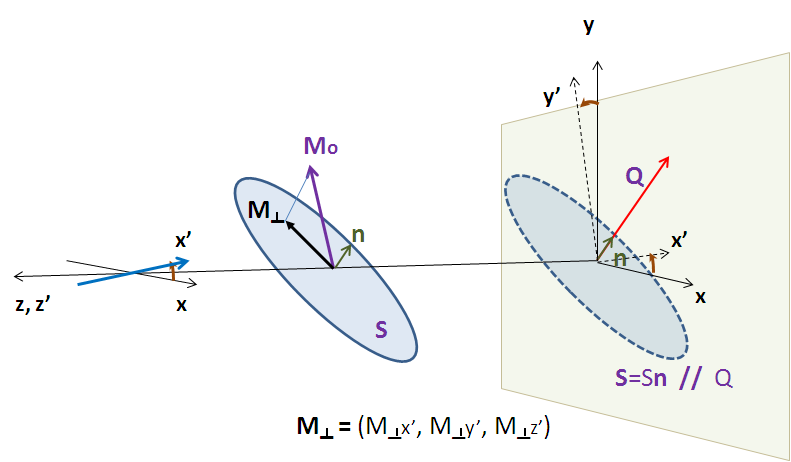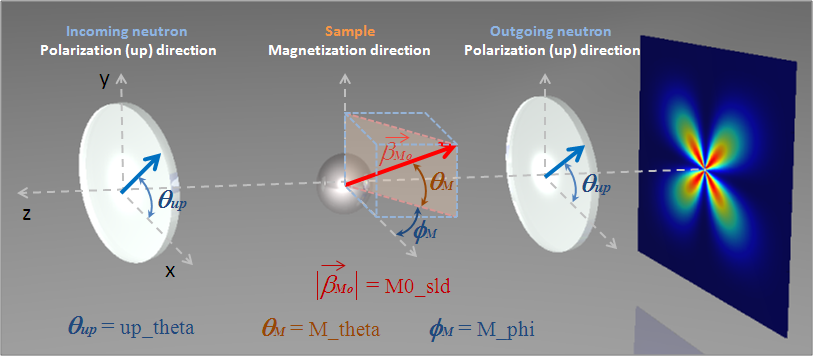Polarisation/Magnetic Scattering
In earlier versions of SasView magnetic scattering was implemented in just five (2D) models
From SasView 4.x it is implemented on most models in the ‘shape’ category.
In general, the scattering length density (SLD = \(\beta\)) in each region where the SLD is uniform, is a combination of the nuclear and magnetic SLDs and, for polarised neutrons, also depends on the spin states of the neutrons.
For magnetic scattering, only the magnetization component \(\mathbf{M_\perp}\) perpendicular to the scattering vector \(\mathbf{Q}\) contributes to the magnetic scattering length.

The magnetic scattering length density is then
where \(\gamma = -1.913\) is the gyromagnetic ratio, \(\mu_B\) is the Bohr magneton, \(r_0\) is the classical radius of electron, and \(\sigma\) is the Pauli spin.
Assuming that incident neutrons are polarized parallel (+) and anti-parallel (-) to the \(x'\) axis, the possible spin states after the sample are then
No spin-flips (+ +) and (- -)
Spin-flips (+ -) and (- +)

If the angles of the \(Q\) vector and the spin-axis \(x'\) to the \(x\) - axis are \(\phi\) and \(\theta_{up}\), respectively, then, depending on the spin state of the neutrons, the scattering length densities, including the nuclear scattering length density ($beta{_N}$) are
and
where
Here, \(M_{0x}\), \(M_{0x}\), \(M_{0z}\) are the x, y and z components of the magnetization vector given in the laboratory xyz frame given by
and the magnetization angles \(\theta_M\) and \(\phi_M\) are defined in the figure above.
The user input parameters are:
| M0_sld | = \(D_M M_0\) |
| Up_theta | = \(\theta_{up}\) |
| M_theta | = \(\theta_M\) |
| M_phi | = \(\phi_M\) |
| Up_frac_i | = (spin up)/(spin up + spin down) neutrons before the sample |
| Up_frac_f | = (spin up)/(spin up + spin down) neutrons after the sample |
Note
The values of the ‘Up_frac_i’ and ‘Up_frac_f’ must be in the range 0 to 1.
Note
This help document was last changed by Steve King, 02May2015